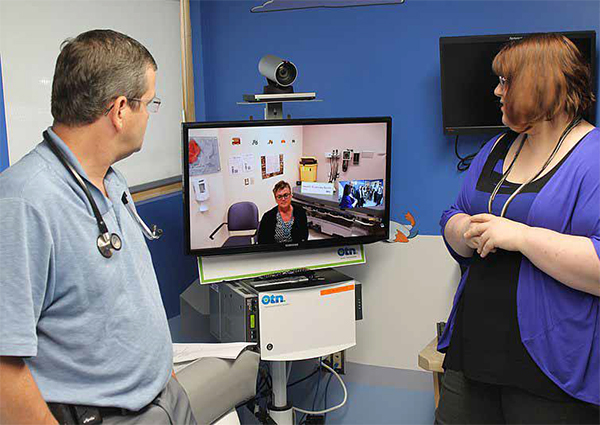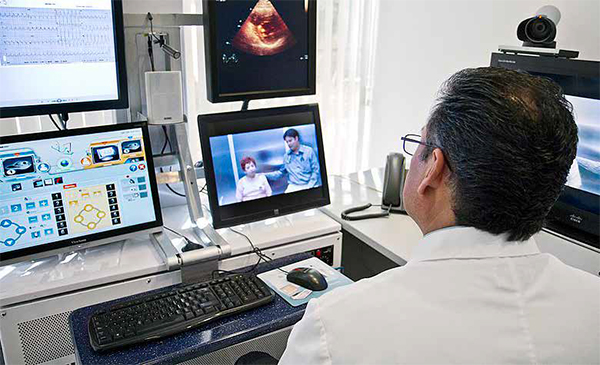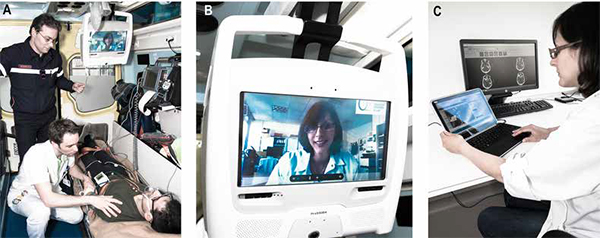Remote healthcare and telemedicine have been a presence across digital healthcare circles for the better part of the last 10 years. It has seen numerous iterations, use cases, and leaders. However, it was the COVID pandemic that helped catapult the field to the forefront of healthcare service delivery in New Zealand. There have been plenty of wins, a few lessons learned, and opportunities missed, but the overarching sentiment is that we must not put the genie back in the bottle.

The global healthcare system is on the brink of collapse. At the start of 2012, the world's population topped 7 billion. More than half of this total is made up of people under the age of 30. We are enjoying longer lives, but we are also multiplying faster than before. While living longer comes with its own set of healthcare worries, the younger generation comes with its own set of specific healthcare red flags. These include rising levels of mental health disorders, obesity, diabetes, and prescription medicine addictions, to name a few.
The current healthcare system is not in disrepair. They are acting in accordance with best practices. However, the system may be overburdened, and it is time to reconsider a number of consequences. Perhaps technology can help make the system more effective and ready for the present and future.
Access to healthcare services has always posed difficulties for healthcare providers. Patients are brought closer to help through a variety of channels, including satellite clinics, virtual health, and mobile healthcare services.
The COVID-19 epidemic highlighted a technology solution that has probably been around for more than a decade. Prior to the pandemic, less than 10% of the world's population used telehealth services. However, the prolonged isolation caused by lockdowns, combined with an almost bizarre fear of crowds, caused the use of telemedicine services to skyrocket.
The forced move to telemedicine during the epidemic revealed use cases that were previously unknown to us. The global pandemic has had a positive impact on provider behavior and increased investment in telemedicine options.
Human connection is at the heart of healthcare. Telemedicine has a significant impact on improving and supplementing human connections. We arrive at the concept of "digital-enabled care" as a supplement to in-person service provision.

For much of the previous decade, remote healthcare and telemedicine have been a presence in digital healthcare circles. It has been through several revisions, use cases, and market leaders. The COVID pandemic, on the other hand, was essential in propelling the field to the forefront of healthcare service delivery in New Zealand. There have been many victories, lessons learned, and missed opportunities, but the overall attitude is that we must not put the genie back in the bottle.
Healthcare workers must embrace innovation not only vertically but also horizontally. Fax machines are still the most popular way of communicating in hospitals worldwide. Instead of focusing on what and how perhaps we should reconsider why.
1. While digitization is imperative, we must not digitize our mistakes. The pace of adoption of telehealth services that we witnessed during and immediately after the first COVID outbreak was driven by a dire need rather than a sequentially staged digital transformation.
The repercussions of the inadequate planning associated with the rapid adoption of this technology are currently being felt. Aligning models and provider/patient behavior management have been obstacles to the use of telehealth on a regular basis, post lockdown.
The lesson to be learned centres around the digitization of prior mistakes. For example, the availability of high-speed internet across the consumer base should not be taken for granted. In addition, the change management journey involved in the introduction and adoption of technology within healthcare workflows should not be underestimated.
2. Adapt your language, not your message the basic tenet of any transaction is trust. Establishing trusted lines of communication between the various actors within the healthcare journey is an essential piece of the adoption puzzle. Understanding the pain points and business requirements of the micro elements that make up the healthcare provider will aid in long-term adoption and growth. Telehealth services across New Zealand were implemented without an accepted level of standardisation. Providers were at the behest of the vendor community, with only a few breaking the mould to provide a better healthcare experience.
3. Understand the business of healthcare the fundamental processes in a healthcare environment have not changed much over the past 50 years: finding a provider, booking a time to see them, receiving health information and referrals, and navigating the healthcare system at large. Many solutions are focused on specific points along this journey and are reluctant to join the dots. A seamless experience along the lines of what the travel and banking industries have achieved is still out of reach for most healthcare consumers. Fixing processes rather than problems should be commonplace in healthcare organisations. Technology is the conduit, not the solution. A succession of clicks, followed by log-ins, backups, and the dreaded system slowdown, is not the promised land of digital wellness.
4. Cohesion through collaboration the creation of an ecosystem through the coalition of the willing will lead to widespread innovation in the healthcare sector.
There is a renewed emphasis on outcomedriven, customer-centric solutions. Establishing government-level support for proofs of concept should be an expected process rather than an exception. The adoption of telehealth services in New Zealand led the way in this aspect, with the government offering zero-rated data programmes allowing access to health information websites and services. The next step will involve a collaborative effort between public and private enterprises to provide internet access to large sections of the population who are unable to afford it.

Conclusion
The improvement of healthcare services is contingent on communal work by multiple agencies, not restricted to the healthcare sector alone.
There is a sense of urgency among providers to jump on the digital bandwagon. Because of digital Darwinism, an organization's survival is no longer dependent on strategy or intelligence.
It depends instead on the ability to adapt. Making the journey through a digital transformation is rewarding, but knowing "why" will keep it going.